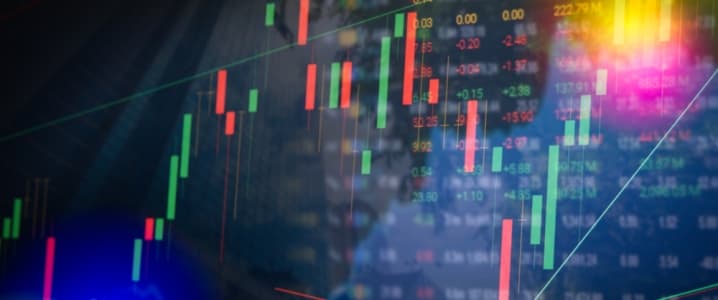Uber (UBER)’s IPO is dominating financial news this morning, but it may seem to be of little interest to energy-focused investors. There is, however, a reason why you should consider it even if energy is your sector of choice. Before doing so though, you, you should look at and consider the implications of three charts.
Uber is generally considered a tech stock, which makes sense given that it is app-based, but the company’s plans for the future have potentially massive implications for the energy sector. In an interview aired this morning on CNBC, CEO Dara Kosrowshahi laid out those plans in an interesting way. He likened transportation to cable television in that it can be seen as a bundle.
You use a car for many different things he said, and just as Netflix (NFLX) and others allowed consumers to “unbundle” TV, so Uber aims to let car owners do the same by using them for specific purposes such as food pick-up, rides to nights out, or even the school run. Given that transportation accounts for the most oil use of anything, reduced, selective use of personal autos has implications for oil, and therefore for the energy sector as a whole.
So, for those invested in energy, buying UBER as a hedge against future disruption makes sense. As always with trading and investing, though, timing matters.
With any IPO, the focus of most investors is inevitably the future. There is, by definition, a limited amount of historical data on the company. The stock’s fate…
Uber (UBER)’s IPO is dominating financial news this morning, but it may seem to be of little interest to energy-focused investors. There is, however, a reason why you should consider it even if energy is your sector of choice. Before doing so though, you, you should look at and consider the implications of three charts.
Uber is generally considered a tech stock, which makes sense given that it is app-based, but the company’s plans for the future have potentially massive implications for the energy sector. In an interview aired this morning on CNBC, CEO Dara Kosrowshahi laid out those plans in an interesting way. He likened transportation to cable television in that it can be seen as a bundle.
You use a car for many different things he said, and just as Netflix (NFLX) and others allowed consumers to “unbundle” TV, so Uber aims to let car owners do the same by using them for specific purposes such as food pick-up, rides to nights out, or even the school run. Given that transportation accounts for the most oil use of anything, reduced, selective use of personal autos has implications for oil, and therefore for the energy sector as a whole.
So, for those invested in energy, buying UBER as a hedge against future disruption makes sense. As always with trading and investing, though, timing matters.
With any IPO, the focus of most investors is inevitably the future. There is, by definition, a limited amount of historical data on the company. The stock’s fate will be decided not by what happened in the past, but by how rapidly the newly public company grows and whether or not it can fulfill its potential. That can be frustrating for traders, who tend to rely on historical data, particularly past price action, when making decisions.
There are, however, charts available for similar stocks in the recent past. Of course, every company and every stock are different, but high-profile IPOs, in tech and elsewhere, have followed a distinct pattern over the last few years. It is what I refer to as “jump, dump and recover”.
What happens is that the hype around an IPO like Uber’s produced demand that exceeds the initial supply of the stock. That usually causes the stock to trade higher than the offering price in its first few days. Sometimes, that initial jump lasts for weeks, but at some point, reality begins to intrude. The fact is that the investment bankers who set the price are very good at what they do, and their job is to maximize returns for early investors. Once the dust has settled, it usually becomes apparent that the offer price was an accurate, or even somewhat optimistic, reflection of the company’s situation and prospects. The stock then typically drops to at least that level, and often below it.
This offering is being frequently referred to as “the biggest since Facebook (FB), so let’s look at the early days of that stock first. The initial offering price of FB was $38. It traded higher than that on its first day, then dropped to less than half the offering price. It didn’t recover the $38 level until around a year later.

Actually, Uber is not the biggest IPO since Facebook, it is the biggest for a U.S. company since then. Alibaba (BABA)’s launch is the biggest ever, at $25 billion. The chart for the early days of that stock looks pretty similar. Once again, there was an initial surge, a decline, and a recovery.

Lest you think this is just a tech phenomenon, take a look at the early days of Visa (V), whose $19.7 billion offering is still the largest for an American company…

Look familiar?
For obvious reasons, I have not researched every IPO ever, but it seems that most big, massively hyped offerings in recent times follow the same pattern. So, if you are looking to buy UBER, and in the interest of full disclosure I should say that I am, waiting for a while may well be your best strategy.




















